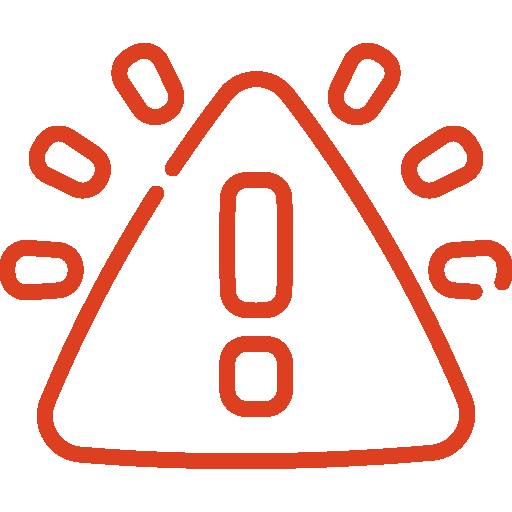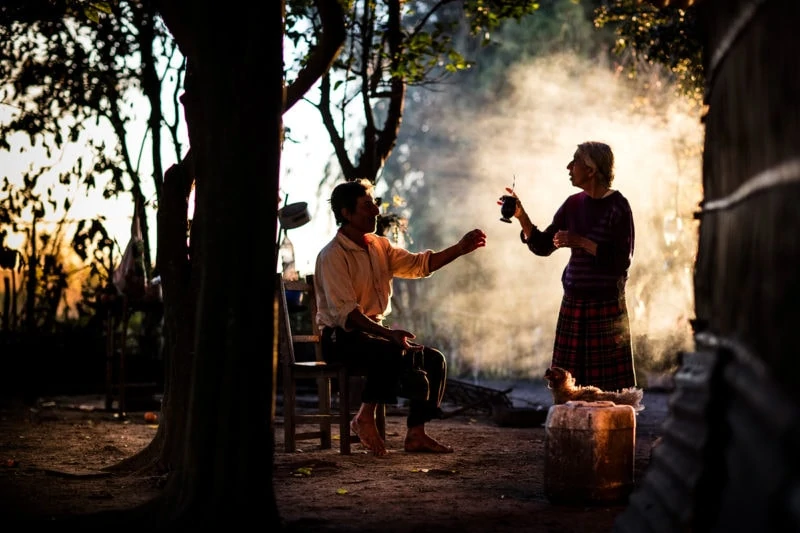

INTO THE WILD IBERÁ
Wetland Boat Adventure
NEXT GROUP DATE:
13 to 19 April 2026
- INFO
- ITINERARY
- PRICE / INCLUDED
- BOOKING CONDITIONS
A Unique Adventure in the Argentine Mesopotamia
-
GENRE
Travel, Documentary, Portrait
-
BEST TRAVEL PERIOD
Year-round
-
DIFFICULTY
Moderate (adventure in a tent, not for everyone)
-
GROUP
Max 8
-
GENRE
Travel, Documentary, Portrait
-
BEST TRAVEL PERIOD
Year-round
-
DIFFICULTY
Moderate (adventure in a tent, not for everyone)
-
GROUP
Max 8
The Iberá Natural Reserve stands as the world’s second-largest wetland, surpassed only by Brazil’s legendary Pantanal.
A vast and pristine wilderness, it is a haven for an extraordinary array of wildlife, from the prehistoric-looking caiman to elusive marsh deer, vibrant bird species, and secretive serpents. This breathtaking sanctuary is a dream come true for Nature Photographers, offering endless opportunities to capture raw beauty in its purest form.
Guided by our expert Lead Photographer, embark on an intimate journey into the heart of Iberá. Glide silently through labyrinthine waterways, where the mirrored surface reflects the sky, broken only by the graceful movements of aquatic life. Venture deep into this untouched landscape to meet one of the last remaining families who have embraced a way of life in perfect harmony with nature—a tradition passed down through generations, untouched by time.
For seven unforgettable days, immerse yourself in an extraordinary world where nature reigns supreme. Marvel at golden sunrises over the wetlands, the haunting calls of howler monkeys echoing through the air, and the hypnotic dance of fireflies under star-studded skies. Engage with the resilient people of Iberá, whose striking features and enduring traditions offer a glimpse into a past unaltered by the modern world.
This is more than a photography expedition—it’s a rare and profound connection with a place where time slows, and the wild spirit of Argentina thrives.

To book flights, please contact us before, we will help you coordinate schedules and transportation to get there. The nearest city is Corrientes.

Transportation to Concepción del Yaguarete Cora is not included in the trip, and we will not be responsible for any delays or disruptions that are beyond our control. In any case, we will do what we can, given the circumstances, to help you.
We will meet the group in the small town of Concepción del Yaguareté Corá, near one of the access points to the Iberá Wetlands.
The Lead Photographer will give an introductory briefing to the workshop.
Night in a hut in Concepción.
We will enter the wetlands with our small boats, crossing narrow channels in a horse-drawn canoe and a “botador” (boatman), through an uncontaminated landscape. In the afternoon we will visit a local family and then we will have dinner with them with typical food of the wetlands.
Overnight in a shelter or tent (depending on the possibilities and climate).
We will wake up before dawn and leave the lodge walking to our boats to get even deeper into the great Iberá Park.
We will have many opportunities to photograph the typical fauna of the wetlands. We will navigate the Carambola stream until we reach Paraje Plumero, in the heart of the wetlands.
Overnight in a shelter or tent (depending on the possibilities and climate). We will take advantage of the privileged position, in a place totally free of light pollution to photograph the night sky.
We will wake up at dawn, with the possibility of photographing the awakening of the day from a “mangrullo”. During this day we will explore the Plumero area.
We will have the possibility of photographing the work of cattle ranching in the wetlands (activity subject to local availability). There will also be plenty of opportunities to photograph wildlife.
Overnight in a shelter or tent (depending on the possibilities and climate).
We will leave early in the morning to reach an island, where we will meet the Villagra people, ancient settlers. A unique opportunity to portray them, learn about their history, document their customs and traditions, spending the day with them, sharing moments on the island.
Overnight in a shelter or tent (depending on the possibilities and climate).
After enjoying the sunrise, we will return to Concepción del Yaguareté Corá.
There we will have time to rest and review together with Gustavo the photos taken during the workshop.
Night in a hut in Concepción.
After breakfast we will say goodbye until the next adventure!
IMPORTANT
The itinerary published on this page and on our PDFs/brochures is indicative. The guide reserves the right to make changes without prior notice, which may depend on various factors/events such as weather, geography, protests, medical emergencies, etc.
Changes are aimed at ensuring the safety of travelers and the success of the trip, always trying to maintain the proposed activities.
Into the Wild Iberá is an adventure trip, where we do not have the comforts of the city, and it is designed for people with the ability to adapt.
Price (based on 6 participants):
1.280 USD (Double / Shared Occupancy)
There is no possibility to add a Single Supplement.
What's included?
- Professional Photographer
- Local Guide
- Chef
- Small Group Size
- Analysis of the Work Done
- Accommodation for 6 Nights
- All Excursions and Photography Activities
- All Breakfasts
- Meals and Beverages from day 2 to 5
- Tent, Kitchenware
What's not!
- Transport from your origin point to Concepción
- Sleeping Bag, Insulation, Towels
- Meals and Beverages on days 1, 6 and 7
- Travel & Medical Insurance (optional, but recommended)
- Personal Expenses
- Tips
Bookings
To book a workshop we ask for 30% deposit of the total.
The workshop balance must be paid 45 days before the start date. You can also pay in cash (USD or euros) upon arrival.
Cancellations & Refunds
For a workshop cancellation, a written notice is required. Please email your request to info@argentinaphotoworkshops.com.
We acknowledge the commitment involved in attending our workshops and strive to accommodate unforeseen circumstances.
Please review our Cancellation Policy below:
• Cancellation made more than 181 days before the workshop start date: 20% refund of any payments made.
• Cancellation made less than 180 days before the workshop start date: No refund of any payments made.
Please note the following:
• In the event that you are unable to attend, your paid balance will be credited for 1 year (from the date of the cancelled trip) as part of the payment of a workshop of your choice.
If the amount was paid in Argentine pesos, the equivalent in US dollars will be credited subject to the exchange rate on the day the trip was cancelled.
In case the workshop is cancelled by Argentina Photo Workshops due to reasons of force majeure:
• There will be a complete refund of the amount deposited.

5% EARLY BIRD DISCOUNT
Applies for bookings made more than 8 months in advance of the start date.
RECOMMENDED EQUIPMENT
Check out our guide on “How to Prepare for a Photography Workshop”, as well as information on equipment and FAQs below.
Near the date of the workshop, we will be in touch through a WhatsApp group, an ideal space to answer all kinds of questions before the trip and organize every detail. If necessary (upon request) we will also arrange a group video call via Google Meet for this purpose.
Although you can participate with any type of photographic device, we recommend a reflex or mirrorless camera, which allow much more freedom and creativity.
Considering the wide variety of photographic situations this workshop presents, it is advisable to have available focal lengths ranging from wide-angle (shorter distances) to telephoto (longer distances).
For Landscape Photography, we suggest a wide focal lenght: ideally around 15 – 50 mm. You can also get a good landscape with a longer focal length by using a stable tripod.
For night photos (Astrophotography) the shorter the focal length, the better. This makes it possible to include more elements in the frame.
For terrestrial wildlife, a 300mm or longer telephoto lens is the best choice.
Consider also buying a tele converter to increase the focal length of the lens: 1.4x or 2x. Even if with loss of luminosity.
Finally, choosing the right set of lenses is not easy. If you encounter difficulties and need some suggestions do not hesitate to contact us.
Many of the areas we visit are remote, and it is possible to fly the drone, always maintaining proper precautions and at a distance from agglomerations of people, airports, and helicopter landing strips.
The most important feature of a tripod is its stability. Since every journey includes some trekking, we must also take into account the weight.
We suggest a good carbon tripod that maintains a good balance between weight and stability, that can easily change from one height to another and that locks in little space.
Aluminum is also fine, as carbon is generally much more expensive. We know that choosing a tripod is not easy and we are available to help you choose the right model for you.
A Polarizing filter will be very useful to neutralize water reflections in the lagoons.
For those who love Landscape Photography, ND filters with 6 or 8 steps will be also very useful to play with the movement of water and clouds.
It is recommended to carry UV or Skylight filters, useful to protect the lenses from Ultraviolet rays (even more important in these altitudes), dust and splashes.
Finding the right photo backpack can be a difficult challenge. We recommend you to rely on a brand with quality and experience in the market.
The type of backpack clearly depends on your equipment. But what really matters is that you feel comfortable with it and possibly fitted with a rain cover.
You can’t miss in your backpack: a cleaning kit for the lenses, a remote control to shoot without touching the camera, hood for the lenses (to avoid flare) and a robust / comfortable camera strap.
It is also important to take spare batteries and memory cards with you. In this workshop, we won’t have a chance to recharge our batteries every day.
For those interested in POST-PRODUCTION we suggest bringing your laptop with some editing software already installed. The Lead Photographer, at the end of the day, will answer your questions.
FREQUENTLY ASKED QUESTIONS
Of course, accompanying non-photographers are welcome. The price is the same.
Usually in a Photo Tour the Leading Photographers accompany to locations only, while in a Workshop you are also expected to receive technical notions to improve your photography. Both options, often confusing, are good. It depends on what one is looking for. Our activities are developed in both modes, depending on the trip.
The most characteristic fauna includes the Marsh Deer (Blastoceros dichotomous), the Pampas Deer (Ozotoceros bezoarticus), the Capybara (Hydrochoerus hydrochaeris), the Maned Wolf (Chrysocyon brachyurus), the Broad-Snouted Caiman (Caiman latirostris), the Yacare Caiman (Caiman yacare), the Yellow Anaconda (Eunectes notaeus), the Neotropical Otter (Lontra longicaudis), the Howler Monkeys (Alouatta).
Some of these species are currently at risk of extinction.
We recommend bring light and heavy clothing, as well as a waterproof or windbreaker jacket.
Hat, neck cover, and sunglasses.
Sturdy, comfortable footwear (possibly more than one pair).
Comfortable and robust backpack to carry your gear and protect it from dust, water and bumps.
Sunscreen, mosquito spray.
The Iberá Wetlands in Argentina typically experience a humid subtropical climate.
Summers (December to February) can be hot, with temperatures often reaching the high 30s °C (over 100 °F), and humidity is quite high. Rainfall is common during this season.
Winters (June to August) are milder and drier, with temperatures usually ranging from 5°C to 20°C (40°F to 68°F). The region can also experience significant temperature drops at night during the winter months.
The wetlands are particularly vibrant in spring (September to November) and fall (March to May), making these seasons great for wildlife viewing.
The round trip between your starting point and Concepción del Yaguareté Corá is not included in the price.
However, we can coordinate it.
These activities require a lot of organization and are prepared well in advance. Weather is a factor we can’t predict, so the workshop/photo tour is not cancelled.
In any case, we will always be attentive to weather conditions to optimize the program and try to provide the best light conditions for photography.
Get more information about the Photo Tour, such as the cost of the next group workshop or a quote for a private adventure, just for you / your group.
GET MORE INFO
Join this Adventure!
RELATED ARTICLES
Interview with Red Bull Photographer Gustavo Cherro
In this interview we will get to know a member of...
Read More
